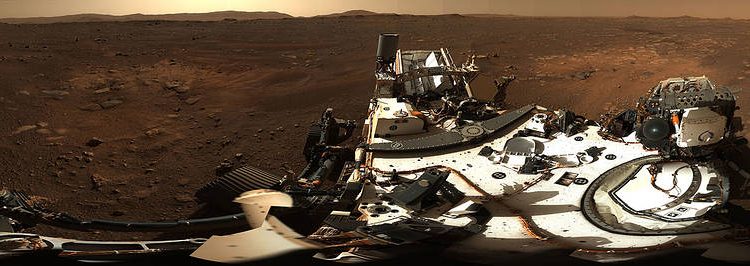
NASA’s Perseverance rover took a high-definition look around the Jezero Crater on Feb. 21, after rotating its mast, or “head,” 360 degrees. The rover’s Mastcam-Z instrument captured its first panorama after touching down on the Red Planet on Feb 18. The rover’s Navigation Cameras, or Navcams, also located on the mast, captured a 360-degree view on Feb. 20.
Combined from 142 images, the panorama reveals the crater rim and cliff face of an ancient river delta in the distance. The camera system can reveal details as small as 0.1 to 0.2 inches (3 to 5 millimeters) near the rover and 6.5 to 10 feet (2 to 3 meters) across the distant slopes along the horizon.
Mastcam-Z dual-camera system is equipped with a zoom function, so the cameras can zoom in, focus, and take high-definition video and panoramic color and 3D images of the Martian surface. The cameras are anticipated to be important for scientists to assess the geologic history and atmospheric conditions of Jezero Crater and to identify rocks and sediment for a closer look by the rover’s other instruments.
Mastcam-Z’s design is an evolution of NASA’s Curiosity Mars rover’s Mastcam instrument, which has two cameras of fixed focal length rather than zoomable cameras. The two cameras on Perseverance’s Mastcam-Z dual cameras are mounted on the rover’s mast at eye level for a person 6 feet, 6 inches (2 meters) tall. They sit 9.5 inches (24.1 centimeters) apart to provide stereo vision and can produce color images with a quality similar to that of a consumer digital HD camera.
The Mastcam-Z team includes dozens of scientists, engineers, operations specialists, managers, and students from a variety of institutions. In addition, the team includes deputy principal investigator Justin Maki of NASA’s Jet Propulsion Laboratory in Southern California.
